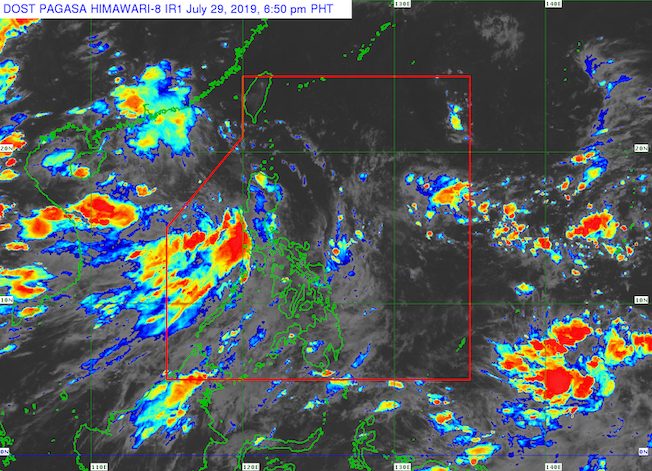SUMMARY
This is AI generated summarization, which may have errors. For context, always refer to the full article.

What’s the weather like in your area? Tweet us at @rapplerdotcom.
MANILA, Philippines – The low pressure area (LPA) over the West Philippine Sea already left the Philippine Area of Responsibility (PAR).
In a Facebook Live video past 4 pm on Monday, July 29, the Philippine Atmospheric, Geophysical, and Astronomical Services Administration (PAGASA) said the LPA, which formed earlier in the day, is now outside PAR and moving toward China or Vietnam.
According to PAGASA Weather Specialist Aldczar Aurelio, there are no other potential tropical cyclones being monitored.
But the southwest monsoon or hanging habagat will continue to affect the western part of the Philippines.
Below is the expected rainfall from the southwest monsoon for the rest of Monday, and possibly until Tuesday, July 30.
Monsoon rain
- Bataan
- Zambales
Isolated rainshowers and thunderstorms
- Metro Manila
- Mimaropa
- Calabarzon
- Cordillera Administrative Region
- Bicol
- the rest of Central Luzon
- Visayas
Flash floods and landslides are possible during periods of heavy rain or severe thunderstorms. (READ: FAST FACTS: Tropical cyclones, rainfall advisories)
Mindanao as well as other areas in Luzon, which are not affected by the southwest monsoon, will have generally fair weather with only isolated rainshowers.
So far, the Philippines has had 7 tropical cyclones in 2019, with 2 of them developing in July and another forming in late June but spilling over to July. (READ: LIST: PAGASA’s names for tropical cyclones in 2019)
The country gets an average of 20 tropical cyclones annually, but since 2019 is an El Niño year, only 14 to 18 tropical cyclones are expected.
Below is the estimated number of tropical cyclones from July to December:
- July – 2 or 3
- August – 2 to 4
- September – 2 to 4
- October – 2 or 3
- November – 1 or 2
- December – 0 or 1
PAGASA declared the start of the rainy season last June 14. – Rappler.com
Add a comment
How does this make you feel?
There are no comments yet. Add your comment to start the conversation.